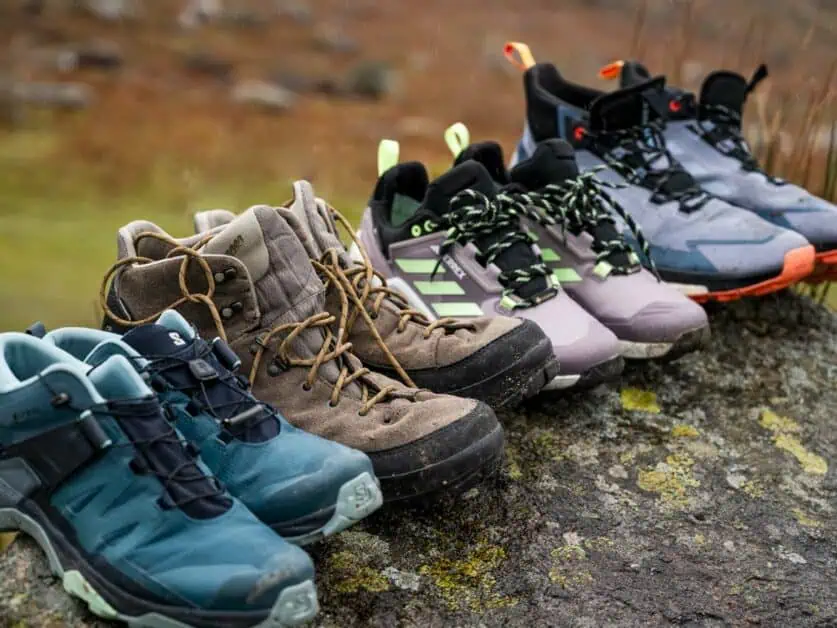Uncategorized
How to Select the Right Camping Boots for Long Hikes
When heading out for a long hike or camping trip, your choice of footwear is critical. The right camping boots can make a huge difference in your comfort, safety, and overall enjoyment. A good pair of boots will provide support, traction, and protection, ensuring that you can hike long distances with minimal discomfort. But with so many options available, how do you select the right boots for your needs? Here’s a detailed guide on how to select the right camping boots for long hikes.
1. Determine the Type of Hike
Before choosing the right boots, consider the type of hiking and terrain you’ll be facing:
- Day Hikes: If you’re planning a short day hike on well-maintained trails, lightweight hiking shoes or trail runners might be enough. These provide comfort and flexibility without the extra weight of full hiking boots.
- Backpacking or Multi-Day Hikes: For longer, more strenuous treks involving rough or rocky terrain, you’ll need more support. Backpacking boots or mountaineering boots are designed for heavier loads and more challenging conditions.
- Trail Conditions: Think about the environment you’ll be hiking in—will there be wet, muddy, or snowy conditions? Waterproof or water-resistant boots may be necessary for wet conditions, while boots with more breathable materials work best in dry, warmer climates.
:max_bytes(150000):strip_icc()/061623-Hiking-Boots-0f5aa3b6cfb645e8a018f12c6708629d.jpg)
2. Fit and Comfort
One of the most important factors when selecting the right camping boots is fit. Ill-fitting boots can lead to blisters, discomfort, and even injuries on long hikes. To ensure a proper fit:
- Size and Width: Make sure you try on boots in the afternoon or after walking around, as feet tend to swell during the day. Boots should be snug but not tight, especially in the heel area. Ensure that there’s enough room in the toe box for your toes to wiggle freely. Many brands offer different width options, so select the one that fits your foot shape.
- Insoles and Arch Support: Many boots come with standard insoles, but you may want to upgrade to more supportive insoles for better arch support and cushioning. This is especially important if you have flat feet or high arches, as inadequate support can lead to discomfort over time.
- Break-In Period: Hiking boots often require a break-in period, so wear them around your house or on short walks before taking them on long hikes. This will help you avoid blisters and other discomforts on your adventure.
3. Support and Stability
Long hikes, especially on uneven terrain, demand boots that offer excellent support and stability:
- Ankle Support: Choose boots with a high cuff if you want ankle support, which is particularly important on rocky or uneven trails. Mid-cut boots offer more ankle mobility while still providing some support, whereas high-cut boots provide greater stability for your ankles.
- Arch Support: The right level of arch support will help distribute the weight evenly across your foot and prevent strain. Many hiking boots offer built-in arch support, but you can also add custom orthotic insoles if needed.
- Midsole: The midsole (located between the outsole and insole) is key for cushioning and support. EVA foam is a common material, providing comfort and shock absorption for long hikes.

4. Material and Durability
The materials of your camping boots will affect their weight, breathability, and durability. When selecting your boots, consider the following:
- Leather: Full-grain leather boots are known for their durability and protection. They’re great for rough conditions but can be heavy and less breathable than synthetic materials. Split-grain leather is lighter and more breathable but less durable.
- Synthetic Materials: Boots made with synthetic fabrics (like nylon or polyester) are typically lighter, more breathable, and dry faster than leather boots. However, they may not be as durable or protective in extreme conditions.
- Waterproofing: Waterproof boots are essential for wet conditions or if you’re hiking in areas prone to rain or stream crossings. Many boots feature a Gore-Tex lining or similar waterproof membranes to keep your feet dry. However, waterproof boots may not be as breathable as non-waterproof ones, so consider the climate and conditions you’ll be hiking in.
- Breathability: If you’re hiking in warm weather or over long distances, breathability is important to keep your feet cool and dry. Look for boots with mesh panels or materials that allow air circulation.
5. Traction and Outsoles
The outsoles of your hiking boots are crucial for providing traction and stability on various surfaces. A good grip is essential to prevent slipping on wet or rocky terrain. Look for:
- Vibram Outsoles: These outsoles are a favorite among hikers due to their durability and excellent traction. The deep, aggressive lugs help you maintain grip, especially on rocky or slippery surfaces.
- Lug Patterns: Larger, deeper lugs provide better grip on uneven terrain. The spacing between the lugs should also be considered; wider spacing allows mud and debris to fall out, improving traction.
- Heel Brakes: A slightly raised heel in the outsole can help prevent slipping while descending steep slopes.
6. Weight
Weight is an important consideration, especially for long-distance hiking. While heavier boots provide more support and durability, they can also make your legs fatigued more quickly over long distances. If you’re planning an extended backpacking trip:
- Lightweight Boots: Consider lightweight hiking boots or trail runners if you’re looking for a faster, less fatiguing option. These boots are great for shorter or moderate hikes, especially if you’re carrying a lighter load.
- Midweight Boots: For those tackling longer hikes with heavier loads, a midweight boot provides the perfect balance of support and weight.
- Heavyweight Boots: If you’re hiking on extremely rugged terrain or carrying a heavy load, you may need heavyweight boots for extra durability and protection.
7. Weather Considerations
Weather conditions play a major role in the type of boots you should select. Depending on the time of year and the climate you’ll be hiking in, you may need different features:
- Cold Weather Boots: For winter or snow hiking, choose boots with insulation to keep your feet warm. Look for boots that offer a good thermal barrier, such as those with Thinsulate or other insulating materials.
- Rain and Wet Conditions: Waterproof boots or those with water-resistant coatings will help keep your feet dry in rainy or muddy conditions.
- Hot Weather Boots: In warm weather, prioritize boots with breathability and moisture-wicking materials to keep your feet dry and comfortable.
8. Budget
Finally, consider your budget when selecting camping boots. While it’s tempting to go for the cheapest option, investing in a high-quality pair of boots is often worth it for long hikes. Premium boots tend to offer better support, durability, and weather protection, reducing the risk of injury and increasing your comfort. On the other hand, if you’re only planning occasional hikes, there are many affordable yet durable options available that will meet your needs.
Conclusion
Choosing the right camping boots for long hikes is crucial for your comfort, safety, and performance on the trail. By considering factors like fit, support, durability, and weather conditions, you can find a pair of boots that will keep your feet happy and well-protected during your outdoor adventures. Whether you’re navigating rocky terrain, crossing streams, or simply enjoying the beauty of nature, the right boots will make all the difference in ensuring your hiking experience is both enjoyable and safe. Happy hiking!

